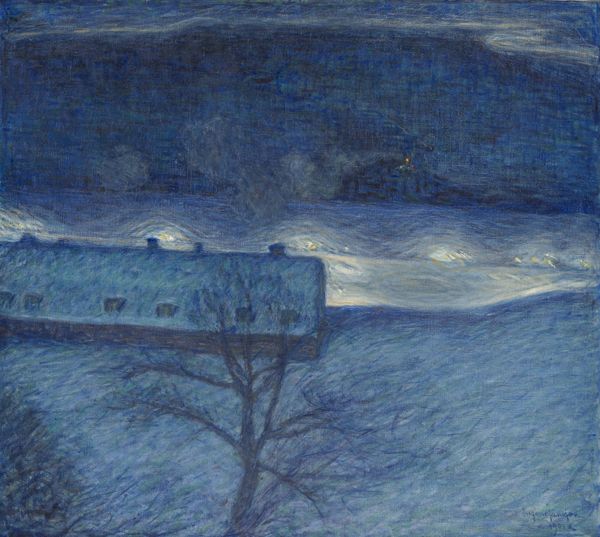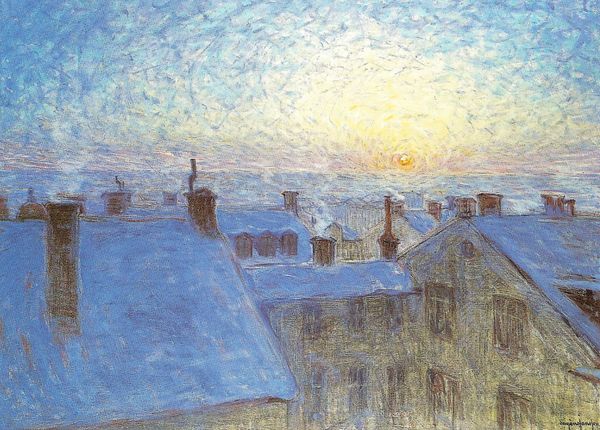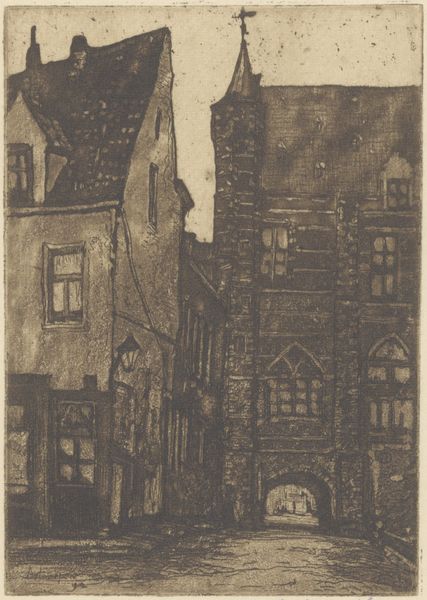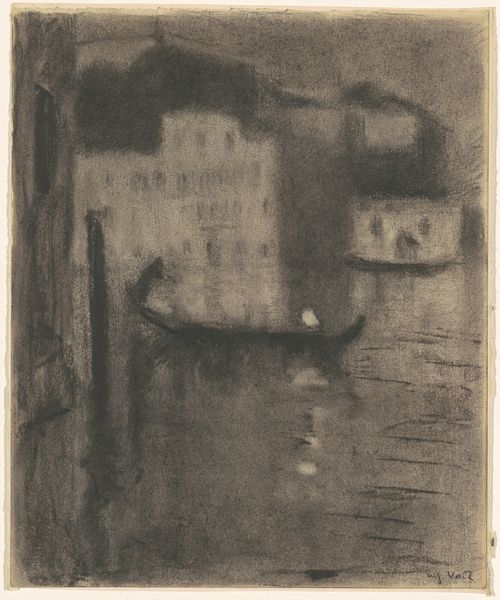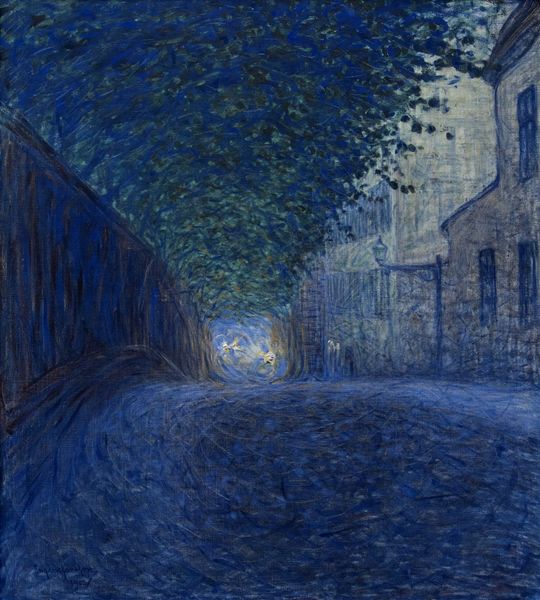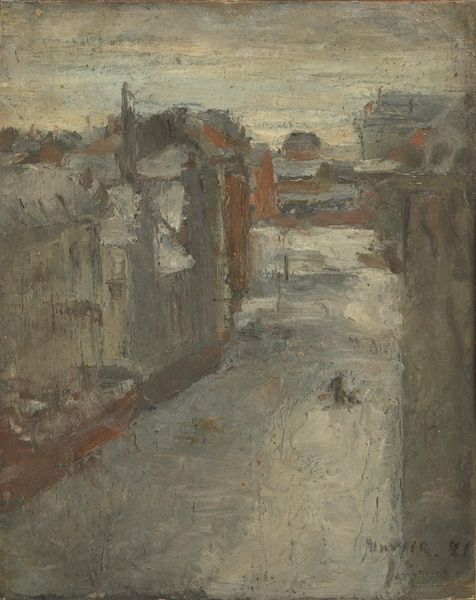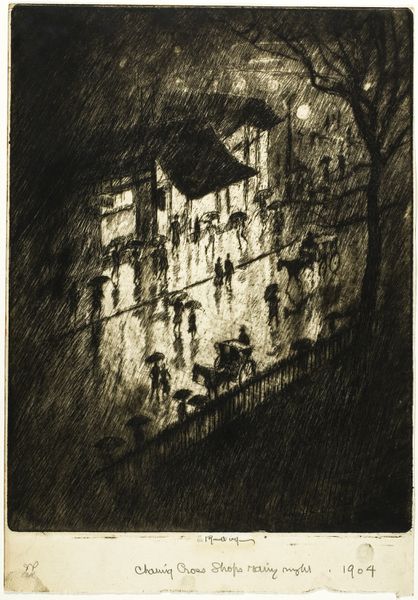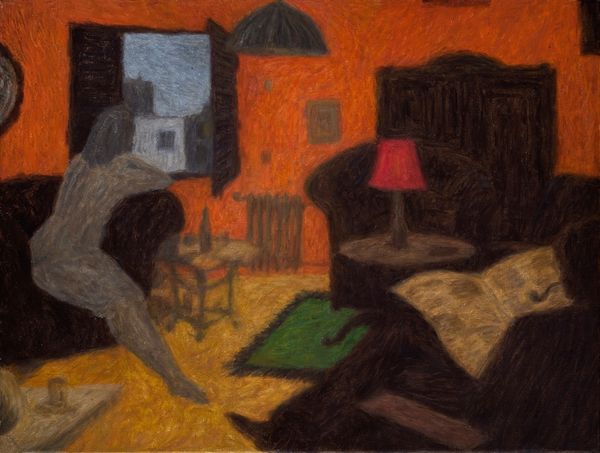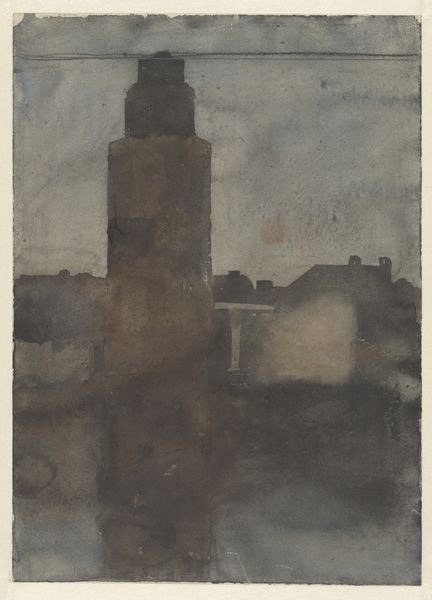
#
amateur sketch
#
rough brush stroke
#
incomplete sketchy
#
painted
#
possibly oil pastel
#
acrylic on canvas
#
underpainting
#
pastel chalk drawing
#
mixed medium
#
unfinished
Copyright: Public domain
Editor: This is Eugène Jansson's "Dusk," created around 1895. Looking at it, I’m struck by how the predominantly blue palette creates such a quiet, almost melancholic mood. What compositional elements do you find most compelling in this work? Curator: The orchestration of colour is certainly paramount here. Note how the limited palette is deployed not for descriptive purposes, but rather to construct a tonal harmony. The gradations of blue, punctuated by that single point of ochre, create a structural rhythm, a play of light and shadow that transcends the depicted scene. Editor: So, it's more about the arrangement of colour than the actual depiction of a cityscape? Curator: Precisely. The buildings become less significant as recognizable forms, and more important as vehicles for the interplay of hues and values. Observe the almost geometric abstraction of the rooftops and walls – shapes interacting within the confines of the picture plane, forging relationships through chromatic contrast and similarity. It invites analysis based on its internal relationships. Do you agree? Editor: I do, it’s almost as if the subject is secondary to the pure aesthetic experience of the colour itself. Did the artist possibly take inspiration from musical theory? Curator: Potentially. This kind of formal arrangement aligns with Symbolist concerns too. Jansson may have drawn inspiration from music, and there is clearly a desire to evoke an emotional or atmospheric response through abstracting reality. The emphasis is on pure form rather than strict representation, don’t you agree? Editor: It certainly shifts my perception. I came in with certain assumptions of what an artist wanted to do, but this reminds me there are multiple approaches. Curator: Exactly, it reminds us that a work's intrinsic elements often speak the loudest.
Comments
No comments
Be the first to comment and join the conversation on the ultimate creative platform.
